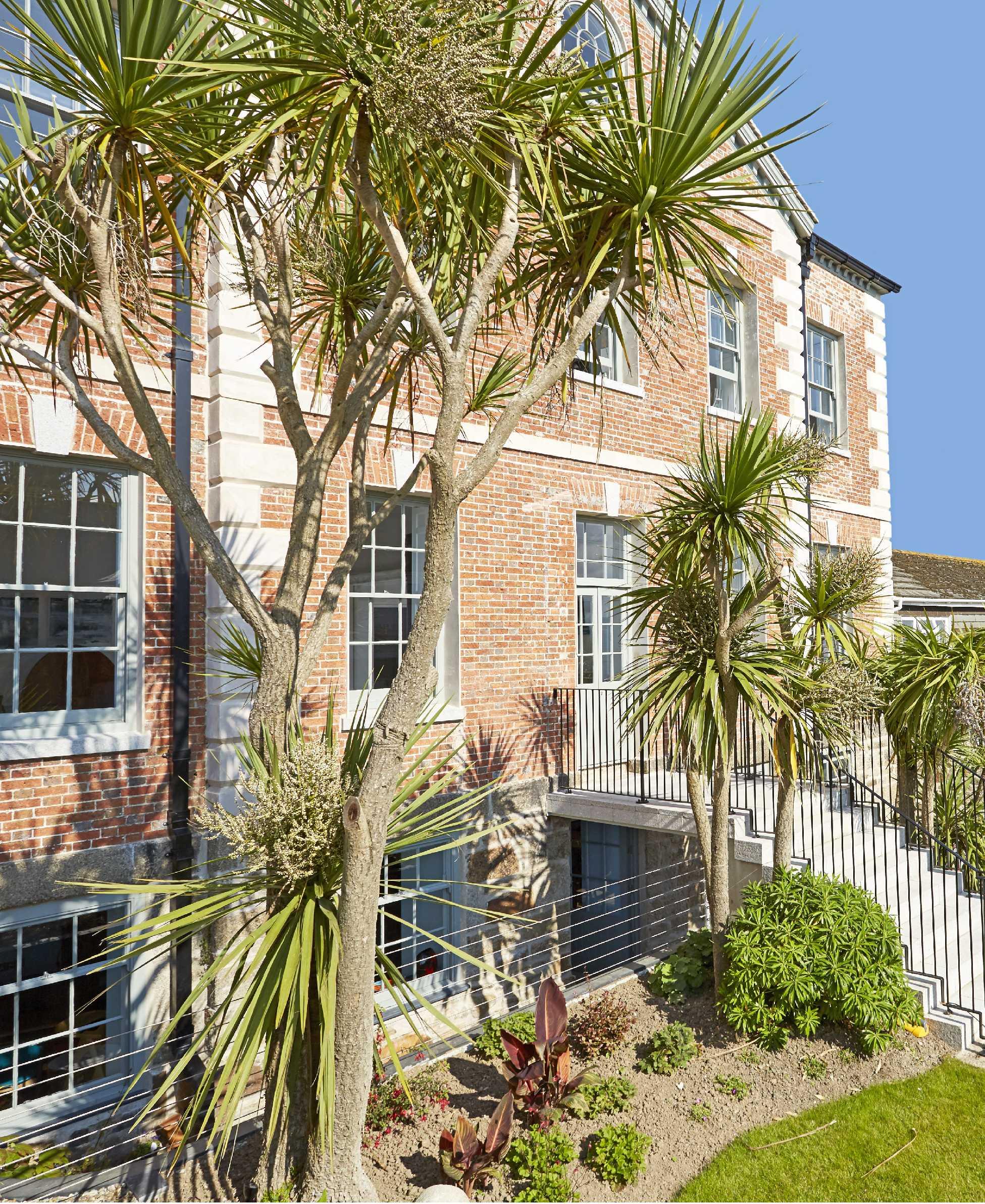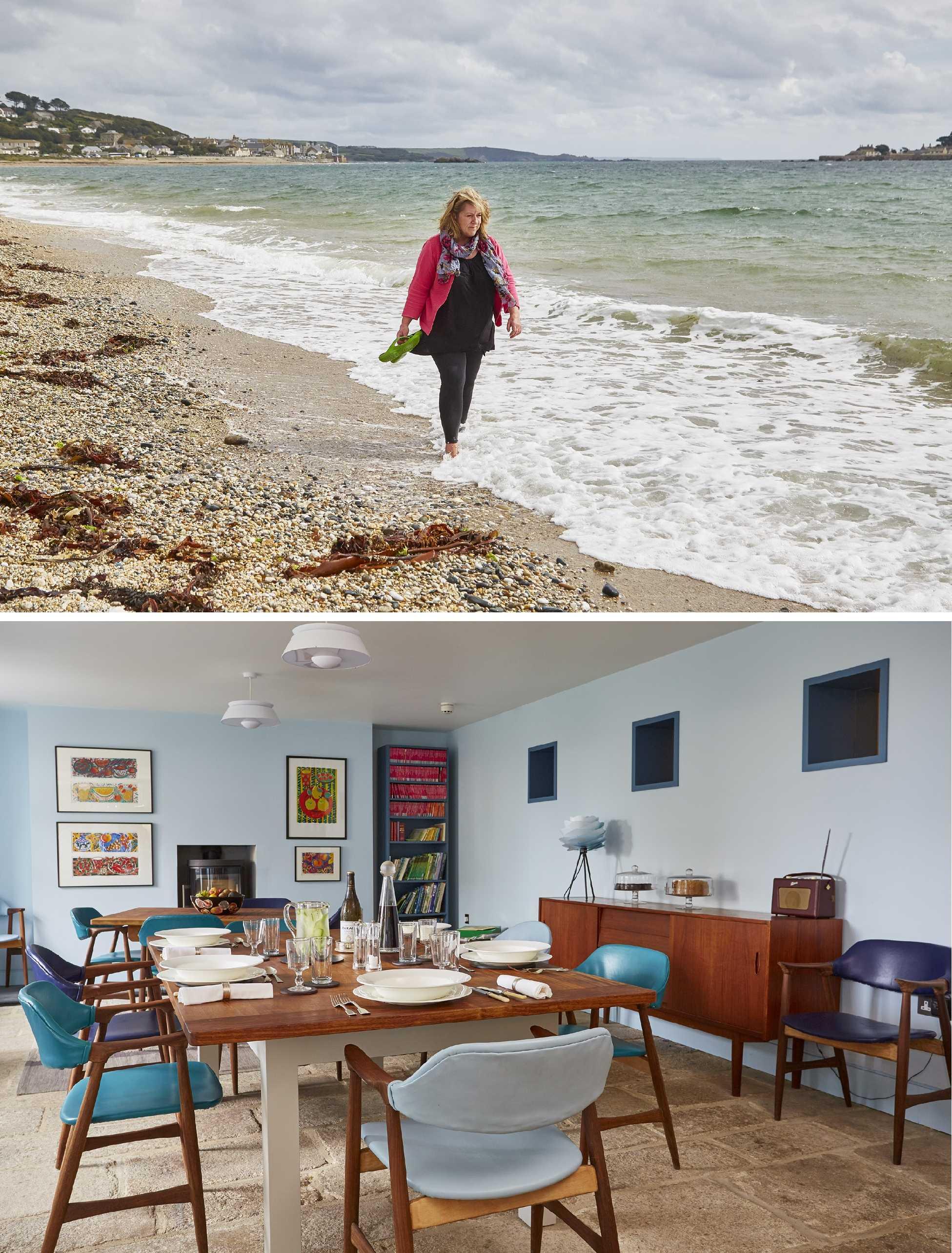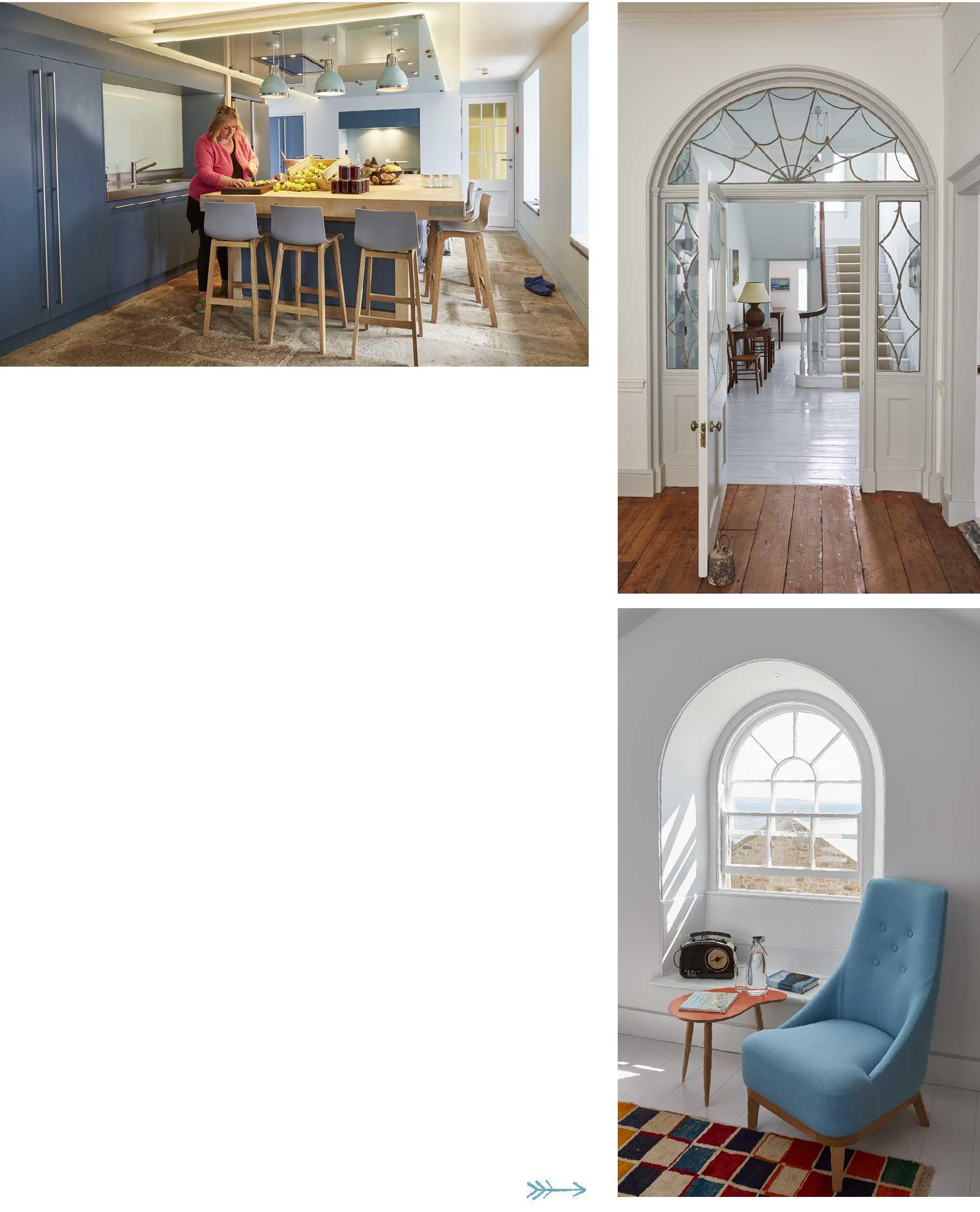
7 minute read
LET THERE BE LIGHT
The transformation of a run-down arts club into a boutique guesthouse in Penzance was a life-changing project for city émigré Susan Stuart
WORDS LESLEY GILLILAN PHOTOGRAPHS PAUL RYAN-GOFF
During the first few weeks of owning Chapel House, Susan Stuart spent hours wandering from room to room, gazing at the sea and the changing light. ‘I think it’s really important to get the measure of a place,’ she says, ‘so you can see how it feels, where the light comes in and where the views are.’
From the upper floors of her
Georgian home, she found herself gazing across the slate and granite townscape of old Penzance, at boats bobbing in the harbour; the sweep of Mount’s Bay and, in the distance, the island-castle of St
Michael’s Mount with the outline of the Lizard Peninsula beyond. From side windows, she peered at other
Georgian houses on historic Chapel
Street, and the granite tower of
St Mary’s Church next door. She discovered most of the rooms are often drenched in sunlight – the pure, invigorating light that’s drawn artists to this part of Cornwall for over a century. After years of living in London and yearning to live by the sea, Susan was thrilled, but for all its charms, buying this Grade II-listed building was a leap of faith.
The house she fell in love with was built in 1790 as a family home (early owners include the Royal Navy’s Admiral Samuel Hood Linzee, who no doubt peeked at the fleet from the windows). From 1993, it was run as the Penzance Arts Club, a venerable institution, with a gallery, bar and guest rooms, before it gradually declined and finally closed. Susan spotted the club when it first appeared on the market in 2007. The guide price was £1.2m but she kept an eye on it; over several years she watched the price come down. Eventually an email saying the vendor was seeking offers over £500,000 saw her scurrying down to Cornwall.
The building was clad in brown pebbledash; inside, most walls were oxblood red – so were the ceilings – there was a catering kitchen in the basement and the top floor was a warren of corridors and gloomy rooms. Later, she’d find that the central chimney was a whisker away from


LEFT Susan walks on the beach at Marazion near Penzance HOUSE PICTURES
Sunlight pours through at the house, which boasts many beautiful original features
collapsing. ‘It was depressing,’ she says. ‘But what I saw, beyond the dark paint, was a glorious Georgian house. Nobody had looked after it for years – that really appealed to my maternal instincts.’
Within seconds, she had made her decision. ‘I wanted it so badly, I thought, I’ll buy it now and think about how I’m going to make a living later – it was a completely upside-down way of doing things.’
OPERATION RESCUE
A chartered accountant, Susan had spent more than 35 years in London. She’d already made a sideways career move by giving up the city for a job as chief executive of the charity Thrive. But in 2012 she was ready for a lifestyle change, and in the sale of Penzance Arts Club, she saw the perfect chance.
‘The more I looked at the house, the more I could see how it could work,’ she says. She envisaged a boutique guesthouse – more upmarket than a B&B, but not as formal as a hotel. ‘I wanted guests to feel as though they were staying with a friend who happened to live in a lovely house. And the house would still be my home.’ She was brimming with ideas, but she knew she couldn’t do it alone.
Local architect Keith Bell jumped at the chance to work on one of the town’s most loved buildings. ‘It’s been central to a lot of people’s histories in Penzance,’ he explains, adding that he announced his own marriage at a party in the old Arts Club bar. ‘This was a project very close to my heart.’ Susan describes Keith as ethical and intuitive, while Keith describes Susan as a client with real vision. ‘The building desperately needed help, and the whole project has been as much about regeneration as it has about creating a boutique hotel,’ he says.
While a team of builders tackled the crumbling structure, the duo hatched a plan for the interior. Susan says: ‘It was all about the light, the changing colours of the sea and bringing the outside in.’ On the ground and first floors, the priority was to restore the building’s beautiful features. Susan

was very much part of the team. She spent months stripping paint off sash windows, shutters, architrave and the stunning hall door with its ornate glazed fanlight. ‘We called her the Chapel Street stripper,’ laughs Keith. For weeks, she mounted a scaffolding tower, stripping cornices on the stairwell.
There were few features worth saving. In the basement, they enlarged the windows – set into a deep granite wall nearly a metre thick – and created a light, open kitchen-diner. On the top floor, they removed low ceilings and opened up the roof space. A defining new feature is a long, angular glass roof dormer, which extends from a lounging space on the top landing and into one of the guest bathrooms, flooding both with natural light. ‘It’s the best place to catch the sunset,’ says Susan.

THE ART OF LIVING
Funded by the sale of Susan’s London house, and most of her savings, Chapel House has been open to guests since May 2015. The Arts Club’s boho bar is now an uncluttered white space, furnished with well-chosen pieces that allow the beauty of the original features to speak for themselves. ‘Georgian architecture goes well with simple modern furniture as well as pieces from its own time,’ says Susan. ‘I already had a fair bit of both from my house in London.’
In the six bedrooms on the upper floors, Susan’s style skilfully mixes old, new and vintage. The mainly white and soft-grey décor is livened up with fabrics and accessories in ‘sea colours’ – including bright upholstery, rugs and works of art.
Bedroom One has a restored original fireplace
In keeping with the heritage of the building, Susan has devoted walls in the hall and drawing room to an exhibition of paintings curated by the Newlyn School of Art which are offered for sale (Susan donates her commission back to the school to help fund its courses). She is passionate about supporting Cornish suppliers and enterprise. ‘I love cooking with local ingredients,’ she says. ‘The butcher’s is full of local meat and you can walk to Newlyn and buy fresh fish straight off the boats. It’s culinary heaven.’
The kitchen is Susan’s domain, as is her live-work space in the basement, however in the rest of the house she is happy to take a back seat. ‘I don’t mind sharing my space with guests. It’s great to see people enjoying the house and the views and loving Penzance as much as I do,’ she says.
Rooms from £150 a night. To book, call 07810 020617 or visit chapelhousepz.co.uk.
SUSAN’S LOCAL FAVOURITES
� Secret swimming. ‘I love the hidden cove at Porth Nanven, tucked down the Cot Valley near Land’s End. The beach is all boulder-size pebbles, but past half tide, there’s a little stretch of sand, weird-shaped rocks and a lagoon, which is perfect for swimming.’ � The Jubilee Pool. Susan is involved with the Friends of Jubilee Pool, and used her charity experience to help raise funds to repair the damage done to this Art Deco lido by storms in 2014. It re-opened in 2016 (jubileepool.co.uk). � Coastal walks. The path from Zennor to Cape Cornwall – a dramatic stretch of rocky coastline – is where the prehistoric landscapes of Penwith Moor meet the ruined engine houses of the Cornish Mining World Heritage Site.
TOP Bedroom Two
has natural light, a freestanding bath and
a woodburner BELOW
The glass roof dormer gives a modern edge to the top floor








